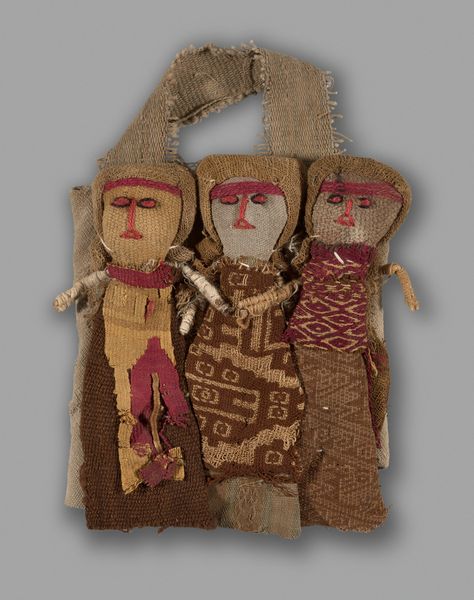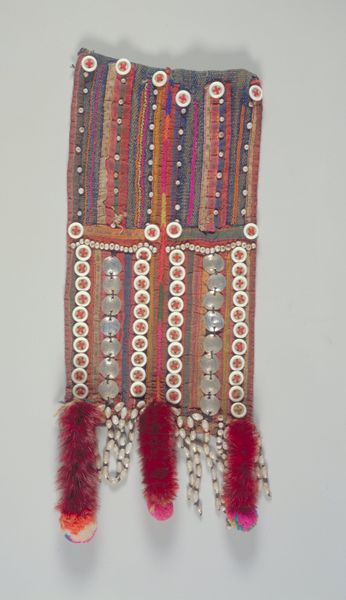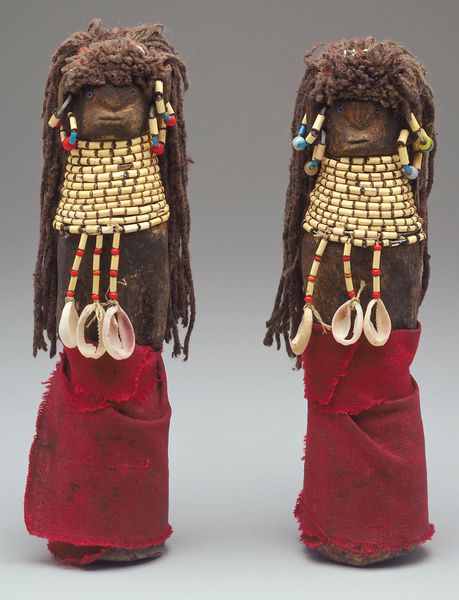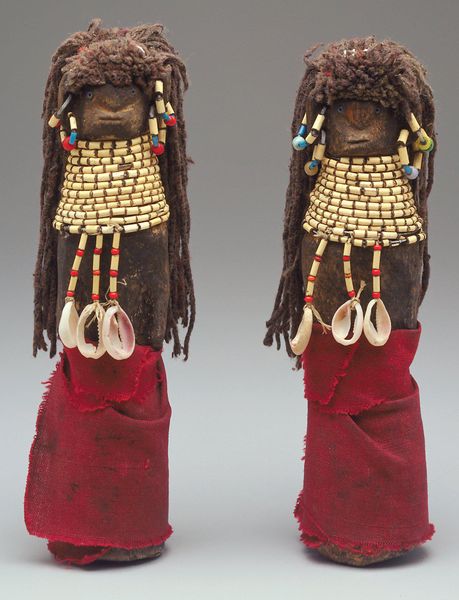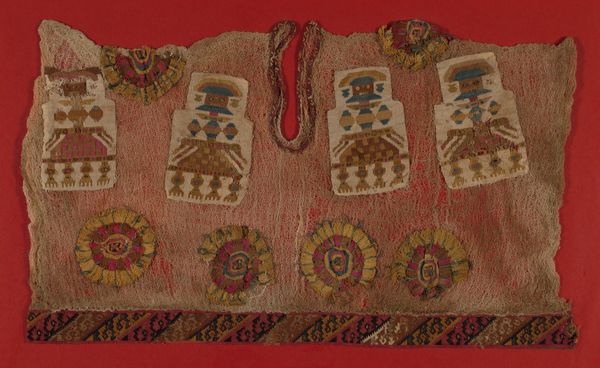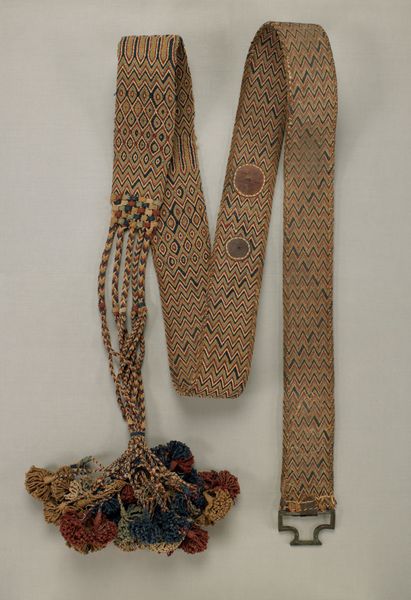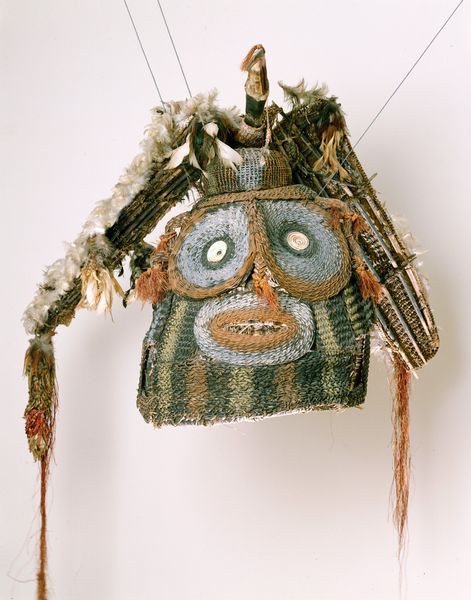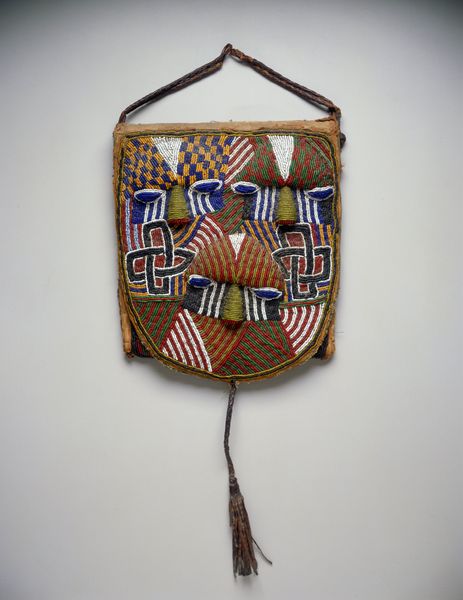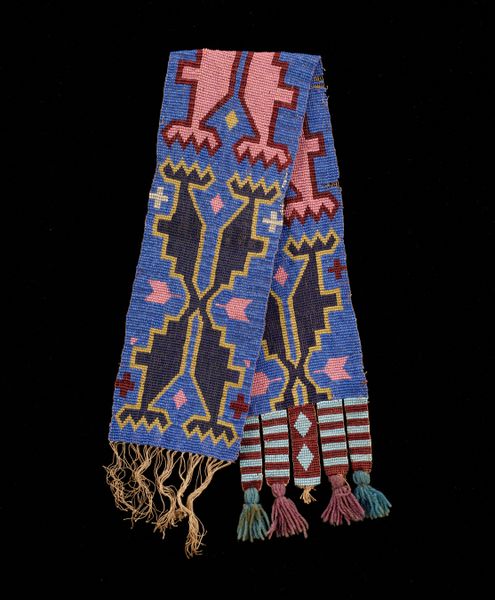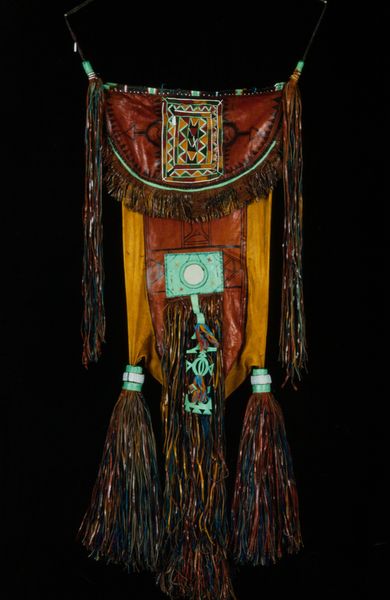
fibre-art, weaving, textile
#
fibre-art
#
weaving
#
textile
#
figuration
#
folk-art
#
fabric design
#
indigenous-americas
Dimensions: 26.4 × 16.2 cm (10 3/8 × 6 3/8 in.)
Copyright: Public Domain
Editor: So, here we have "Dolls," potentially made sometime between 1476 and 1984, artist unknown, and the materials include wool and other mixed media textile techniques. Looking at these three figures, they strike me as more than mere child’s playthings. What social stories do you think this piece might be telling? Curator: Well, these Chancay dolls aren't *necessarily* what we think of as playthings today. When viewing this from a historical lens, especially within the Andean context, objects like these carried significant cultural and perhaps spiritual weight. How do you think access to materials might have influenced their creation and reception? Editor: That's a good question. The use of materials like wool suggests a connection to local resources, possibly indicating a specific social class or access to trade networks. And considering these dolls could have been produced across several centuries, how do you think museums influence the interpretation and preservation of folk art like this? Curator: The Art Institute's decision to display them immediately frames these dolls as worthy of aesthetic appreciation, regardless of their original function. However, this elevation also invites critical questions. Were these items displayed during periods of heightened interest in "exotic" cultures, potentially reinforcing colonial perspectives? How does placing a creation spanning several centuries within the walls of a museum influence our interpretation? Editor: I see your point. The display creates a formal context that shifts the emphasis from potential cultural uses to formal qualities. This really complicates how we understand their role. Curator: Precisely. It's vital to be aware of these power dynamics at play in shaping cultural narratives when considering objects of indigenous origin. Editor: That’s definitely something to consider as I continue my studies, I've learned a lot today about cultural and social interpretations of objects in museums. Curator: Glad I could shed some light; keep digging, the stories are there.
Comments
No comments
Be the first to comment and join the conversation on the ultimate creative platform.

